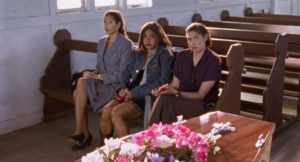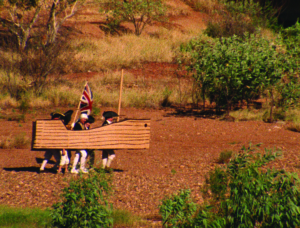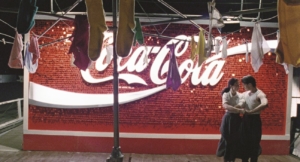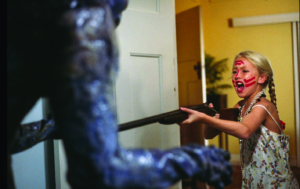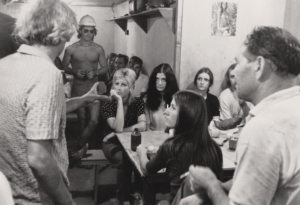There are two stories to be told here – one about a remarkable film, and another about three fabulous sisters. We will come back to the film later.
The McDonagh sisters
The sisters were Isabel, Phyllis and Paulette, the eldest of the seven children of John Michael McDonagh, a doctor who, in the early 1900s, lived in Macquarie Street, catering to the upper crust of Sydney society from his consulting rooms there as well as from his private hospital in College Street. The sisters had been educated at the Convent of the Sacred Heart, Elizabeth Bay. They boarded at school during the week, but returned home every weekend, where they listened spellbound to performances by artists from J. C. Williamson Ltd., Sydney’s leading theatrical company – for which their father served as honorary surgeon[1]Paulette McDonagh, interview with Graham Shirley & Joan Long, 14 August 1974, National Film and Sound Archive of Australia Oral History Collection, no. 799472. – at social gatherings hosted by their parents.[2]Paula Dornan, interview with Judith Kelly, 5 February 1983, National Film and Sound Archive of Australia Oral History Collection, no. 330324.
There was a time when the McDonagh sisters led the flappers’ life of luxury and pleasure: while they had money, they spent it freely and partied wildly,[3]Paulette McDonagh, interview with Shirley & Long, op. cit. although this lifestyle never defined them.[4]See Joan Long, ‘“The Two of Us, the Camera and Three Little Legs”: Part 1 of a Historical Survey of Women in Australian Film Production’, Cinema Papers, no. 9, June–July 1976, pp. 38, 89, available at https://ro.uow.edu.au/cp/9/, accessed 27 August 2020. In any case, it became more difficult after their father died in January 1920, leaving the family not as wealthy as they had assumed themselves to be. Their mother, Annie Jane McDonagh (nee Amora), purchased the splendid and spacious Drummoyne House – a forty- room Georgian classical mansion – as the family home.[5]For a general history and photographs of Drummoyne House until its 1971 demolition, see Michael Lech, ‘Drummoyne House Remembered …’, Sydney Living Museums website,<https://sydneylivingmuseums.com.au/stories/drummoyne-house-remembered>; for contemporary comment on the importance of the house to McDonagh Productions, see ‘An Australian Film: Enterprise of Three Sisters’, The Daily Telegraph, 8 June 1926, p. 5, available at <https://trove.nla.gov.au/newspaper/article/245761908>, both accessed 27 August 2020. She had been a nurse before marriage, so she ran a convalescent home from 1921 in part of the house, with help from eldest daughter Isabel, who also had nursing experience. After Annie’s death in March 1924, the McDonagh siblings had to support themselves.
The three eldest were well-educated and independent women who wanted careers that would allow them to keep both that independence and their bohemian lifestyle.[6]The sisters were later described by a family friend as ‘more Bohemian than anything around now’. See Graham Shirley, ‘McDonaghs of Australian Cinema.’, Filmnews, vol. 8, no. 12, December 1978, p. 15, available at <https://trove.nla.gov.au/newspaper/article/213735475/23022986>, accessed 27 August 2020. They embarked on making silent feature films, a career they had been preparing for all their lives. Their gender sometimes impeded them in a male-dominated industry,[7]They were once told by a distributor, ‘Go home, little girls.’ See Ross Cooper, ‘The McDonagh Sisters’, Cinema Papers, no. 3, July 1974, p. 261, available at https://ro.uow.edu.au/cp/3/, accessed 27 August 2020. but they never endorsed anti-male attitudes, and often found men helpful and encouraging.[8]Paulette McDonagh, interview with Shirley & Long, op. cit. They loved the theatre, had attended many stage productions, and had a wide acquaintance in theatrical circles. In addition, as daughters of their times, they had always been fascinated by moving pictures, and, while they were wealthy, had been able to indulge their passion by viewing most of the films released in Sydney as they grew up. They became highly knowledgeable, studying not just the lives and loves of the stars as they were presented in the popular press and fan magazines, but also how films were created and marketed. Paulette, in particular, would pursue a film that she admired, viewing it several times until she understood how camera and editing techniques had been combined with effective writing and acting to produce a precise emotional result. For instance, Sorrell and Son (Herbert Brenon, 1927) made her cry, so she went back to it repeatedly until she understood how this effect had been achieved.[9]ibid. She and Phyllis had started writing their first feature-film script while still at school.
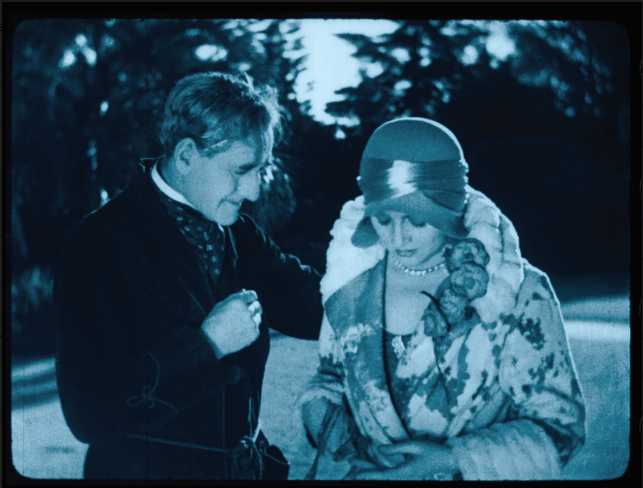
The sisters were not impressed by the quality of Australian films. They were also city folk who knew little of the outback, or of the people and places depicted as the ‘real’ Australia in many local productions.[10]Some examples include Greenhide (Charles Chauvel, 1926), For the Term of His Natural Life (Norman Dawn, 1927) and The Romance of Runnibede (Scott R Dunlap, 1928). Instead, their model was Hollywood, which had emerged during World War I as the centre of the American film industry and in a position to take over world leadership from the European studios, which had been starved of funds and resources during the war. Their favourite Hollywood genre was the society melodrama. These films depicted a lifestyle that the sisters knew well: it was all around them, in their urban environment and in the homes of the friends and acquaintances of their parents.
It is therefore unsurprising that, when the McDonagh sisters started making films themselves, they would choose to locate their stories in the upper reaches of urban society. They were careful not to identify a particular place: except for their final film, set in London, their feature-film stories could have been located in any large, modern city. They were not the only Australians working in this space,[11]Other films of this ilk produced around the time include: Sydney’s Darlings (Thomas Marinato, 1926), Environment (Gerald M Hayle, 1927) and Caught in the Net (Vaughan C Marshall, 1928). but they had unique advantages. Paulette explained that they were ‘just born into it’.[12]Paulette McDonagh, interview with Shirley & Long, op. cit. Their first film, Those Who Love (Paulette McDonagh & PJ Ramster, 1926), was financed by A£1000 inherited from their father.[13]See Graham Shirley, ‘The McDonagh Sisters’, National Film and Sound Archive of Australia website, ; and Sandra Hall, ‘The First Ladies of the Cinema’, The Bulletin, 3 May 1975, p. 46, available at https://nla.gov.au/nla.obj-1440177007/, both accessed 27 August 2020. Drummoyne House, lavishly furnished with their father’s antiques, provided the location. If they lacked any item of clothing or furniture or smaller objects to dress a set, they persuaded family and friends to lend them or commercial suppliers to provide them in return for publicity. These social and professional contacts stood them in good stead for their second feature, The Far Paradise (Paulette McDonagh, 1928). Even after they sold Drummoyne House, they still knew all the smart locations – and how to persuade owners to cooperate.[14]For more details on these first two productions, see Andrew Pike & Ross Cooper, Australian Film: 1900–1977: A Guide to Feature Film Production, 2nd edn, Oxford University Press, Melbourne, 1988; and Andrée Wright, Brilliant Careers, Pan Books, Sydney, 1986. Each of the sisters had her own strengths and made her own contribution to the film projects. Isabel, born Isabella Mercia McDonagh in 1899, was considered very beautiful, with wavy brown hair, classic features, ivory skin and a Cupid’s-bow mouth. After appearing in a small role in Lawson Harris’ Sydney-produced feature A Daughter of Australia (1922), she was ‘discovered’ by filmmaker Beaumont Smith, who screen-tested her before casting her in the lead, under the stage name Marie Lorraine, in his feature film Joe (1924). She also appeared in the flapper comedy Painted Daughters (F Stuart Whyte, 1925), and might have made an acting career in film if the Australian industry had been larger and/or more prosperous. She did travel to Hollywood, but not until 1934, after she had withdrawn from the family enterprise. As the star of each of the feature films produced by McDonagh Productions, she became its public face.
Phyllis Glory McDonagh, born in 1900, was credited as art director, production manager and publicist. As art director, she found locations, using family contacts and employing a philosophy of always going ‘to the top’. In practice, this included obtaining the cooperation of the New South Wales commissioner of railways, the commissioner of police and the managing director of a large city bank.[15]Phyllis told how, when they needed a train, she persuaded the railway commissioner to permit the use of the premier’s official train – and, when they overran their agreed time, the premier was happy to watch while they competed filming. See Suzanne Spunner & Sue Johnston, ‘Interview: Phyllis McDonagh’, Lip, nos 2 & 3, 1977, p. 101. Employing the same philosophy as publicist, she invited the governor of New South Wales to a preview of Those Who Love, and the press reported that he was seen to cry and to promise to send his wife and daughter to a screening.[16]ibid. Phyllis also played small roles as an extra, and worked on the features as a writer (without credit). She explained in interview that she offered storylines and Paulette turned these into film scenarios.[17]ibid., p. 102. Her organisational skills and attention to detail were vital to projects.
Paulette de Vere McDonagh, born in 1901, was, despite being the youngest of the three, the driving force of their filmmaking as writer/director. In preparation for this, she worked as an extra on The Mystery of a Hansom Cab (Arthur Shirley, 1925), and attended director PJ Ramster’s acting school. She employed Ramster to help her direct her first feature – along with his cameraman Jack Fletcher – but she found him unwilling to put her vision into effect. Instead of scrupulously following the script, in which she had specified every shot and camera angle, he went his own way, often directly contradicting her wishes.[18]Paulette McDonagh, interview with Shirley & Long, op. cit. She later claimed to have sacked him, though she did give him shared directorial credit on that first feature. Fletcher, who had worked for Paramount in Hollywood, stayed on as cameraman on all the rest of the sisters’ productions.
The sisters believed that they had, indeed, succeeded on their merits, though by their third film they were in a much less favourable financial position than when they began.
In practice, the three sisters worked together cooperatively and collaboratively, always bringing their films in on budget. The box-office success of their first film gave them the means to produce a second, and – though this was a more modest success – they still had some funds to take into a third project. At this stage, their reputation in the Australian film industry was high, and their future seemed bright.[19]John Tulloch, Legends on the Screen: The Australian Narrative Cinema, 1919–1929, Currency Press, Sydney, 1981, p. 302.
In 1927, while The Far Paradise was in production, the federal government announced a Royal Commission on the Moving Picture Industry in Australia, intending to encourage innovation in the local product but also to measure what support there might be for a national exhibition and/or distribution quota of Australian-made films. The arguments in favour of a quota drew on the monopolistic practices of the (largely American) distribution companies that deliberately excluded Australian product from their contracted cinemas. Against this argument, successful Australian films (including Those Who Love) were cited as clearly demonstrating that if a production was good enough, then it would succeed on its own merits without government intervention.[20]ibid., pp. 299–303.
The sisters believed that they had, indeed, succeeded on their merits, though by their third film they were in a much less favourable financial position than when they began. Their troubles had already started with the deaths of their parents, leading to a rapid erosion of family finances and eventually the sale of Drummoyne House. So even before the release of their second feature, they had been under financial strain. By the end of the decade, the Great Depression had arrived. The sisters did not give up on their dream, but, as they planned a third feature, they also had to support themselves. Isabel became a partner in a photographic parlour, and did some modelling for the painter Thea Proctor. Phyllis became a journalist, writing articles and short stories for various Sydney newspapers. Paulette continued to plan that third feature film.[21]Wright, Brilliant Careers, op. cit.
Making The Cheaters
Which brings us to the second part of this story: The Cheaters (Paulette McDonagh, 1929). Originally, the film’s length was 6000 feet plus; it survives at 6309 feet (ninety-four minutes at 18 frames per second). Australian film historian Graham Shirley introduces it like this:
The Cheaters was funded by Neville Macken, a retired wool grazier and McDonagh family friend. Its five-week shoot began in June 1929 at the Australasian Films studio at Bondi Junction and locations in and around Sydney. More professional actors appeared in this film than in the earlier McDonagh films, and again the sisters cast supporting roles with friends and acquaintances from Sydney society. Locations included the Gowan Brae historic mansion in North Parramatta, and the Ambassadors Café in the basement of Sydney’s Strand Arcade.[22]Graham Shirley, ‘Curator’s Notes’, ‘The Cheaters (Silent) (1929)’, Australian Screen,<https://aso.gov.au/titles/features/the-cheaters-silent/notes/>, accessed 27 August 2020.
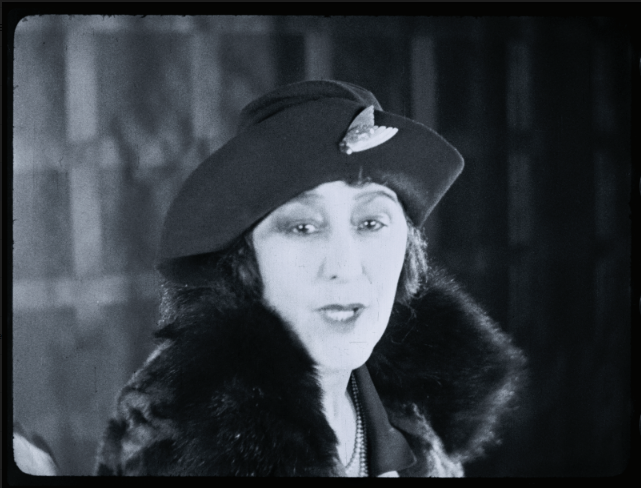
The story was ambitious in its complexity. The sisters denied ever having a message in their films.[23]Spunner & Johnston, op. cit. However, writing stories around Isabel as star required that the heroine be central, or at least equal to the hero in story importance and screen time. So they inverted the traditional romantic narrative to present it from the female perspective: girl meets boy; girl loses boy; girl overcomes obstacles and gets boy in the end. Complicating this is a story of fraught relationships between families: the supposed father of the girl is seeking revenge on the adoptive father of the boy.[24]Shirley points out that there are echoes here of Shakespeare’s Romeo and Juliet; see Graham Shirley, ‘The Cheaters’, Cinema Papers, no. 100, August 1994, p. 19, available at <https://ro.uow.edu.au/cp/100/>, accessed 27 August 2020. Elsewhere, Tulloch comments on the incestuous implications of such a plot; see Tulloch, op. cit., p. 295. Though one father is a convicted embezzler–turned–gang leader and the other is a respected businessman, in each case their wealth allows a leisured lifestyle in a luxurious mansion. So this story draws on several familiar film models: the high-society melodrama, the romance, the gangster genre, the revenge theme. Central to the story are the moral issues, with the children caught up in a quarrel not of their making and the fathers both claiming justice is on their side despite the shakiness of their high moral ground. Though the Sydney Morning Herald critic found the plot absurd,[25]‘Australian Film. The Cheaters.’, The Sydney Morning Herald, 2 June 1930, p. 8. others were impressed by its novelty.
As in the sisters’ previous films, the mise en scène is beautifully realised, the acting (particularly of Isabel, again working under the name Marie Lorraine) nuanced and subtle, and the touches of humour lighten the often-sombre mood. Paulette once more demonstrates her understanding of how images can be constructed and edited to create emotion and visual style, and Fletcher’s camerawork supports her in this: he was a master of lighting, and he knew how to accommodate a director who had pre-planned every take without losing his own integrity. Overall, The Cheaters is a story built on wild coincidences and told as pure melodrama,made at a time when such approaches were considered advantages.
Some trade leaders recognised these qualities and supported the efforts of the sisters. After reading the script, exhibitor Frank Thring Sr volunteered to manage the distribution of the film. As he owned the national Hoyts cinema chain, this could have been of great benefit, but the sisters rejected the offer, thus antagonising a major trade figure. Paulette later attributed this unfortunate decision to their lack of business experience, and Shirley speculates that it may have contributed to the film’s difficulties in finding commercial release.[26]Shirley, ‘McDonaghs of Australian Cinema’, op. cit., p. 16.
But it was also a matter of timing. The American part-talkie The Jazz Singer (Alan Crosland, 1927) had been released in Australia in 1928, and the idea of film accompanied by sound had quickly captivated the public imagination. By late 1929, when The Cheaters was first on offer, film distributors did not welcome a completely silent film. In addition, there was the incentive of the federal government’s 1930 national feature-film competition, advertised as encouraging innovation. Though silent films were not excluded from entry, the sisters believed that they stood a better chance of winning if they added a soundtrack.
The Jazz Singer had been released in Australia in 1928, and the idea of film accompanied by sound had quickly captivated the public imagination. By late 1929, when The Cheaters was first on offer, film distributors did not welcome a completely silent film.
So the McDonaghs opted to film three sound sequences – two dialogue sequences, and one of the heroine singing at the piano – as well as a full orchestral accompaniment. Sound recording for film was in its infancy in Australia, and, though there were several companies experimenting, none were yet fully equipped.[27]The Sun reported that The Cheaters ‘has to go to America before it can receive the gift of speech’ as ‘no equipment exists in Australia for the recording of sound pictures’. ‘Last Shot: First Australian Talkie The Cheaters’, The Sun (Sydney), 29 September 1929, p. 2. The sisters first tried Standardtone in Sydney,[28]The short-lived Standardtone company was a partnership of Macken (who financed McDonagh Productions) and Fletcher, with Bill Shepherd employed as editor. See Neville Macken interview with Graham Shirley, 7 August 1971, National Film and Sound Archive of Australia Oral History Collection, no. 227531; and Shirley, ‘McDonaghs of Australian Cinema’, op. cit., p. 17. but eventually went with Vocalion in Melbourne.[29]See Graham Shirley, ‘Bill Shepherd: Pioneer Australian Film Editor’, Cinema Papers, no. 4, December 1974, p. 299, available at https://ro.uow.edu.au/cp/4/, accessed 27 August 2020; and Shirley, ‘Curator’s Notes’, op. cit. The choice of sound-on-disc proved another costly mistake. The shift from sound-on-disc to sound-on-film was already underway, though not all cinemas had yet been wired for sound.
The sisters also found themselves embroiled in the protective action taken by the Musicians’ Union, which in March 1930 forbade its members from participating in recording for sound film.[30]‘Local Musicians Must Not Play for Talkies Says Union’, Everyones, vol. 11, no. 526, 19 March 1930, p. 34, available at <https://nla.gov.au/nla.obj-571484415/>, accessed 27 August 2020. The McDonaghs opted to advertise for non-union labour. The reporting of this spat in the trade press unsurprisingly presented the trade view: that the union was unreasonable, and that the actions of the McDonaghs were proof of the ‘myth’ of the Aussie battler (in this case three young women) overcoming obstacles.[31]Tulloch, op. cit., p. 295. By May, the union had realised that the ban was not only unrealistic, but actually counterproductive: musicians who had lost their old jobs accompanying the exhibition of silent film were being cut off from one of very few new opportunities. The ban was lifted,[32]‘Australian Musicians Can Play for Talkies Now.’, Everyones, vol. 11, no. 535, 21 May 1930, p. 7, available at <https://nla.gov.au/nla.obj-570400885/>, accessed 27 August 2020. but it had delayed the completion and therefore the release of the part-talkie version of The Cheaters.
Initial reception
With their first film, the sisters had been assumed to be dilettantes: as young and female, they could be indulged, patronised or exploited according to the personalities and attitudes of the male-dominated trade, whether it be the moguls who controlled distribution and exhibition or the press, which presented received critical wisdom. Their second film built their reputation, but with their third film, they were now full professionals, entitled to be taken seriously. However, this also meant accepting the judgement of a market under stress from both a new technology and a national and international financial crisis.
Adding sound did not help The Cheaters. The judges of the Commonwealth Film Awards announced that there was no film good enough to win first prize.[33]‘£10,000 Film Contest Flops. 3rd Prize Only.’, Everyones, vol. 11, no. 535, 21 May 1930, p. 7, available at <https://nla.gov.au/nla.obj-570400885/>, accessed 27 August 2020. Third prize was awarded to Fellers (Austin Fay & Arthur Higgins, 1930), and no prize was given to The Cheaters, despite representations on its behalf in the trade press.[34]‘Screening The Cheaters’, The Film Weekly, 5 June 1930, p. 3.
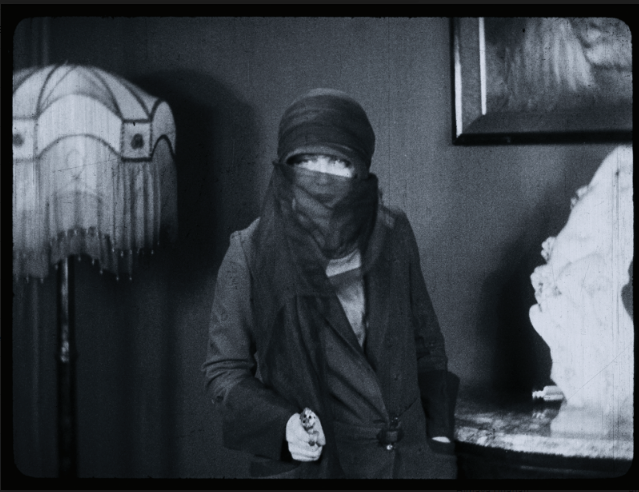
A public screening of the part-talkie was held at the Roxy Theatre on Castlereagh Street on 1 June 1930 for an invited audience of press and industry representatives.[35]See Shirley, ‘Curator’s Notes’, op. cit.; and Pike & Cooper, op. cit., p. 152. On that occasion, Macken, who was responsible for adjusting the sound levels, misunderstood his cue and turned the volume up instead of down, so that the cracking of an egg at a breakfast table sounded like ‘the Anvil Chorus’.[36]Wright, op. cit., p. 39. The audience laughed and the film’s fate was sealed. The critic for the Sydney Morning Herald reported:
The Misses McDonagh’s latest film […] is not as interesting as their last production, Far Paradise. For one thing, they have slavishly copied American models, instead of striving to give their work originality, the Americanisms, ‘big boy,’ ‘dame,’ and ‘gangster,’ creep into the captions. For The Cheaters is, through the greater part of its length, a silent film […] The use of captions seem[s] strained and artificial […] The Cheaters suffers from a poor, badly-told story. Especially toward the end, absurdities spring up in battalions. The piece of dialogue that brings the picture to a close is an extreme example of bathos […] The acting of the cast […] is weak, and it goes at too slow a tempo, flying to the other extreme from the fault of jerky rapidity that used to mar local productions. The best feature of the film lies in its settings.[37]‘Australian Film. The Cheaters.’, op. cit.
This suggests that the trade’s unwillingness to release the part-talkie should not be attributed only to its technical deficiencies – perhaps the urban storyline was not recognised as ‘typically’ Australian.[38]Wright, op. cit., p. 40. This review also acknowledges that the film did not accommodate the new methods of storytelling required by the shift to sound.
On the other hand, like earlier McDonagh productions, it did still meet the criteria for success laid down by the trade paper Everyones and discussed by Australian silent-film historian John Tulloch:[39]Tulloch, op. cit., p. 299. it offered the type of story appreciated by the exhibitor; it avoided depending on scenery; it was not too ‘Australian’; it provided convincing details of plot and mise en scène; it offered good enough titling and excellent camerawork. But all of this was not enough. Neither the silent version nor the part-talkie received general release.
There is some evidence of limited exhibition. Shirley points out that: According to a 1975 interview with veteran projectionist Albert Wright, the sound-on-disc version was screened in the early 1930s at Melbourne’s St Kilda Palais. After the Palais screening, this version of The Cheaters disappeared from public view.[40]Shirley, ‘Curator’s Notes’, op. cit.
At this stage of its history, the film seems largely a victim of circumstances, its failure attributable to a combination of ill-advised decisions, unfortunate timing and sheer bad luck.
There was no place, even in Australia, for a film that was still exploring the new medium. Paulette was correct when she acknowledged that, by 1931, the film was ‘hopelessly out of date’.
The 1931 version
Nonetheless, the sisters did not give up. In 1931, they decided to remake the film using Fletcher’s ‘newly-perfected Standardtone sound-on-film recording process’,[41]Shirley, ‘The Cheaters’, op. cit., p. 19. which was ahead of its time in using a variable density soundtrack.[42]Graham Shirley, ‘The Coming of Sound: Standardtone vs Cinesound’, History, no. 137, September 2018, pp. 3–7. They kept the same story, locations and actors. Some sequences were reshot with full sound; others (such as long shots without dialogue) were re-used with just the music track added. Some sequences were constructed by intercutting medium shots from the silent version with new synchronised-sound close-ups, a technique that produced grading problems that are still visible in the surviving print. They also occasionally used the new and risky technique of post-synchronisation, and still included the occasional intertitle. After more than a year of hard work, they had a full sound-on-film version, eighty-four minutes long, ready for release.[43]The process began in July 1930, and was only completed in October 1931. See Shirley, ‘The Cheaters’, op. cit., p. 19.
However, by then it was too late. Small companies such as McDonagh Productions and independent innovators such as Fletcher and Bill Shepherd could not compete against the vast resources of Hollywood. By late 1931, when the third version of The Cheaters was ready for distribution, Hollywood sound films had swept the world, and only the highest quality of both technology and technique was acceptable to the public. There was no place, even in Australia, for a film that was still exploring the new medium. Paulette was correct when she acknowledged that, by 1931, the film was ‘hopelessly out of date’.[44]Paulette McDonagh, ‘Back-screen Story of Real Romance Told by a Sydney Film Directress: Great Future Lies Here’, Truth (Sydney), 18 February 1934, p. 27, available at <https://trove.nla.gov.au/newspaper/article/169332232>, accessed 27 August 2020.
Silent and sound technologies require quite different structures and techniques. Shirley judges that the silent version ‘turns potentially stock elements into a heartfelt, engaging romantic tragedy, [while] the talkie reduces them to mechanical basics’.[45]Shirley, ‘The Cheaters’, op. cit., p. 19. He finds that the pruning of the story has impaired its emotional impact, and that the dialogue falls flat. There are some sequences (including one in the hotel dining room) in which sound is used to advantage – in fact, I was impressed by the degree to which the film captured the casual overlapping of environmental sound and natural speech – but there is too often emphasis on clear enunciation, slowing the action to a glacial pace. This is particularly true of the two fathers, whose performances are reminiscent of those stage actors who never quite adapted to (silent) film. Isabel seems to have mastered the transition to sound, despite her occasionally jarring Australian accent. Others in the supporting cast, particularly Josef Bambach, also seem comfortable acting with sound. Overall, however, the action of the film is slow and the soundtrack laboured; it is hard to imagine this version standing up to international competition.
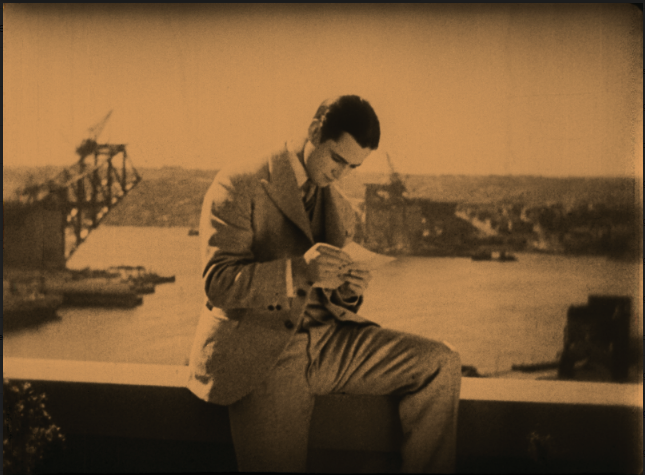
Rediscovery and restoration
Although some films of McDonagh Productions probably survive in private collections, the reputation of the McDonaghs and their films depends on what survives in public repositories, notably the National Film and Sound Archive of Australia (NFSA).
The silent version of The Cheaters has had a long afterlife and strong supporters. Film historian Hartney Arthur judged the surviving McDonagh productions as among the best silent movies ever made.[46]Long mentions this in her interview with Paulette; see Paulette McDonagh, interview with Shirley & Long, op. cit. Shirley places The Cheaters in the same realm as Raymond Longford’s masterpiece The Sentimental Bloke (1919),[47]Shirley, ‘The Cheaters’, op. cit., p. 19. while Andrew Pike and Ross Cooper compare it to Fritz Lang’s two-part German thriller Dr. Mabuse, der Spieler (1922), which had been screened in Australia in 1928, though we have no evidence that Paulette ever saw this.[48]Pike & Cooper, op. cit., p. 152. Decades later, the film was rediscovered, as Shirley describes:
In the 1960s the Film Division of the National Library of Australia (which later included the National Film Archive, predecessor to NFSA) copied the silent version from a 35mm nitrate print held by Melbourne collector Harry Davidson. The film was subsequently made available through the NLA’s Film Study Collection. In 1975 the silent Cheaters screened to appreciative Australian audiences at the Sydney Film Festival and at the International Women’s Film Festival. Since then it has continued to screen at festivals and film societies around the world.[49]Shirley, ‘Curator’s Notes’, op. cit. Further information about how and where fragments of the film were found is provided in Ken Berryman, ‘McDonagh Sisters Talk’, Filmnews, vol. 18, no. 7, August 1988, p. 11, available at <https://trove.nla.gov.au/newspaper/article/213878206>, accessed 27 August 2020.
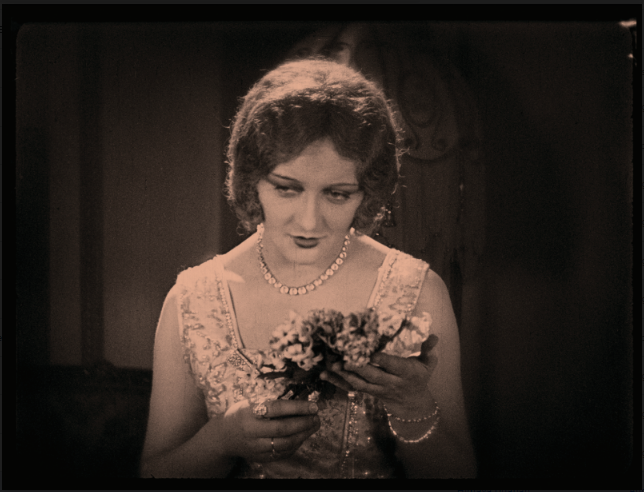
Paulette was not always pleased about this. She was indignant that control of the films had passed beyond the reach of the people who had made them; the sisters were not always even informed of a screening or acknowledged as creators, and were not consistently paid royalties for the use of extracts from their films in retrospective compilations and television presentations.[50]Paulette McDonagh, interview with Shirley & Long, op. cit.
It is no accident that so much research was done and so many articles were published about the film around the mid 1970s. The Cheaters is a film made by three women, and was rediscovered at the height of second-wave feminism. Though Paulette described herself as ‘a man’s woman’ and belittled feminism,[51]ibid. I remember how warmly the film was received by feminists in the 1970s, and how the McDonaghs were adopted as inspiration and role models at a time when women were struggling for a foothold in the Australian film revival.[52]See, for instance, Long, op. cit.; Hall, op. cit.; and Spunner & Johnston, op. cit.
In the 1980s, the NFSA acquired that good nitrate print of the silent version from Davidson’s estate. In 1997, a fuller version was reconstructed from all available prints and fragments and set to a music track by Ron West. The film was restored in 2017 as part of a project conducted jointly by the NFSA and Haghefilm Digitaal. The newly restored print was screened at the Melbourne and Sydney International Film Festivals.[53]The joys and challenges of the restoration process are described in Tara Marynowsky, ‘NFSA Restores: The Cheaters’, National Film and Sound Archive of Australia website,<https://www.nfsa.gov.au/latest/nfsa-restores-cheaters>, accessed 27 August 2020. The only section of the sound-on-disc part-talkie version to survive, however, is one music disc held by the NFSA.
Meanwhile, the existence of the sound-on-film version was not mentioned in any of the interviews done with participants, or in any contemporaneous discussion of the film itself. Though there is no evidence that it was ever screened publicly, part of the first reel turned up in a Sydney laneway in 1986, and even more (apparently from the same print) two years later.[54]Berryman, op. cit., p. 11. Together, these make up about thirty-six out of the original’s eighty-four minutes. Shirley calls this ‘the most tantalising and mysterious of all early Australian Talkies’.[55]Shirley, ‘The Cheaters’, op. cit., p. 19. Part of the mystery is how it survived at all, and how it managed to come to light so many years later.
In hindsight, the McDonagh sisters would have been better off launching the silent version of The Cheaters into a restricted market and then getting on with learning the new technology in preparation for their next project. But, as usual, hindsight is not helpful.
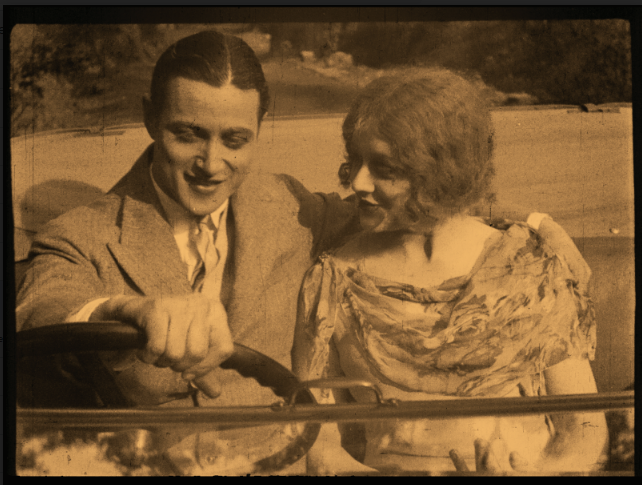
After The Cheaters
The Cheaters turned out to be a turning point in the career of the McDonagh sisters. The whole film industry (production, distribution and exhibition) was shaken to its roots by the shift to sound, but, for McDonagh Productions, the challenge was more than technological.
First, there was the financial aspect: production of sound films was simply much more expensive than silent production, and the sisters no longer had financial reserves to call on. In fact, their finances never recovered from The Cheaters. Macken, who had backed all three versions, lost most. But the sisters, too, lost all the money they had invested, including all the profits from earlier successes. They entered a period of straitened finances during which Isabel filed for bankruptcy.[56]Wright refers to Isabel’s listing in bankruptcy proceedings in The Sydney Morning Herald, and that proceedings were later withdrawn; see Andrée Wright, ‘McDonagh, Isabella Mercia (Isabel) (1899– 1982)’, Australian Dictionary of Biography, 1986,<http://adb.anu.edu.au/biography/mcdonagh-isabella-mercia-isabel-7332>, accessed 27 August 2020.
Without money in reserve, the McDonaghs would have to start each new project by seeking funds, a process made more difficult by the industry’s habit of judging a director by the box-office returns on their last film. So the commercial failure of The Cheaters – in all three versions – made the search for financial support for future projects that much more difficult. It also complicated the distribution process for those later projects. In general, the sisters were no longer poster girls for the Australian production industry: they could not be cited as proof that good films will always succeed in an open market.
They subsequently moved away from their familiar territory of urban romance, devoid of social comment. Instead, they made several short documentaries, mostly on sporting themes,[57]These are discussed in Berryman, op. cit., p. 12. Paulette was particularly proud of these short films; see Paulette McDonagh, interview with Shirley & Long, op. cit. and one more feature film: Two Minutes Silence (Paulette McDonagh, 1933). This was a grim but uplifting anti-war film based on the successful stage play by Leslie Haylen. This change of direction suggests a change in either their own preferences or those of Australian audiences: the sisters seemed no longer so confidently in tune with their public.
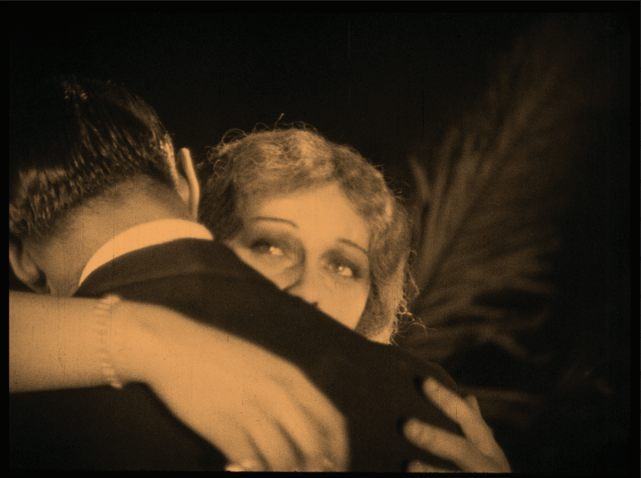
It is not surprising that their early efforts with the new technology were clumsy: across the world, filmmakers took time to adapt, and many simply did not manage the transition and faded from view. Paulette did not have the luxury of learning time, as she had had with her long study of silent-film form: this time, she was thrust into the new technology, learning on the job as she produced the two sound versions of The Cheaters. She learned quickly, as her later sound films attest – but not quickly enough to save The Cheaters. Unfortunately, no footage of Two Minutes Silence survives, so we are reliant on the generally (but not universally) supportive critical reaction to judge how well Paulette managed the challenges of the transition to sound technology and technique.
Scholar Ann-Marie Cook proposes that the downturn in the fortunes and reputation of the McDonagh sisters was prompted less by production and distribution problems than by their insistence on doing things their own way.[58]Ann-Marie Cook, ‘Re-assessing the Demise of the McDonagh Sisters’, Screening the Past, no. 40, 15 September 2015,<http://www.screeningthepast.com/2015/08/reassessing-the-demise-of-the-mcdonagh-sisters/>, accessed 27 August 2020. There is some justification for this. However, we should not underestimate the contribution of changes in family relationships – partly the inevitable shifts over time, and partly the stresses created by the saga of The Cheaters. After Two Minutes Silence, the sisters simply moved apart. That close collaboration, which had been their greatest strength, was no longer possible as their lives diverged, though it is not easy to discern which is cause and which is effect in this scenario.
In 1932, Isabel married Charles Stewart, who financed Two Minutes Silence. After that film was finished, the couple embarked on an overseas trip that included London (where she refused an offer of film work from Alexander Korda) and Hollywood. Back in Sydney, they had three children: a daughter and two sons. Later in life, after her husband’s death, Isabel appeared briefly on the stage before she and her children moved to London, where she later died in 1982.
Phyllis kept working as a journalist and editor, writing for various newspapers in New Zealand, where she married (but had no children). She later returned to Sydney, continued to work as a journalist, and died there in 1978. Paulette tried to continue on her own, assisted by her brothers John and Grant. She started work on researching and writing another feature film, on the life of John Flynn, titled ‘Flynn of the Inland’. Eventually she gave up trying to fund this project, and withdrew from film production. She lived with her younger sisters for a while, then moved to Kings Cross, where she died in 1978. Brian Seamark remembers her as one of the eccentric ‘characters’ who made the Cross so colourful, calling her ‘highly intelligent and a fun person from the day I met her’.[59]Brian Seamark, interview with Ina Bertrand, 26 January 2003, original held in Freda Freiberg Library, Monash University, Caulfield campus. Shirley also remembered her fondly, and reported that she continued to hanker after making movies.[60]Shirley, ‘McDonaghs of Australian Cinema.’, op. cit., p. 15.
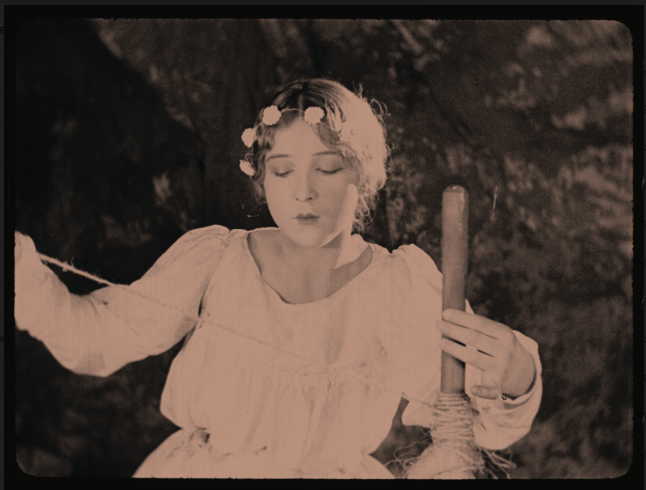
At the 1978 Australian Film Institute Awards, Phyllis accepted the Raymond Longford Award for Lifetime Achievement on behalf of the three sisters. Within a few months, both Phyllis and Paulette died, prompting Labor MP Barry Jones to present a eulogy in the House of Representatives on 9 October 1978.[61]Berryman, op. cit., p. 11. The reputation of the McDonagh sisters now seems unassailable, and rests largely on the surviving films: fragments from Those Who Love, and the substantially intact The Far Paradise and The Cheaters. The story of how the latter was made, and of the people involved in its making, provides a fascinating insight into the world of early Australian film.
Author’s note: This piece is heavily indebted to previous researchers, particularly Andrée Wright and Graham Shirley, for both biographical research on the McDonagh family and filmographic research into the various versions of The Cheaters. Thanks are also due to Zsuzsi Szucs and Angus Johnstone, who facilitated access to the holdings of the NFSA.
This article has been refereed.
| MAIN CAST | |
| Paula Marsh | Keith Manion |
| Marie Lorraine | Frank Hawthorne |
| Richard Marsh | Jules Severie |
| Arthur Greenaway | Stanley Court |
| Lee Travers | Louise Nash |
| Josef Bambach | Elaine de Chair |
| John Travers | Lady Worth |
| John Faulkner | Leal Douglas |
| Mrs Hugh Nash | Jan |
| Nellie McNiven | Reg Quartly |
| PRINCIPAL CREDITS | |
| 1929 (silent version) | Director/Writer/Producer/Editor |
| 1930 (sound-on-disc version) | Paulette McDonagh |
| 1931 (sound-on-film version) | Production Company |
| Length | McDonagh Productions |
| 94 mins (silent version) | Production Manager/Art Director |
| 84 mins (sound-on-film version) | Phyllis McDonagh |
| Cinematographer/Editor | |
| Jack Fletcher | |
Select bibliography
Rebecca Barry, ‘The McDonagh sisters’, Women Film Pioneers Project, 2013, <http://wfpp.columbia.edu/pioneer/ccp-the-mcdonagh-sisters/>.
Ken Berryman, ‘McDonagh Sisters Talk’, Filmnews, vol. 18, no. 7, August 1988, pp. 11–2, available at <https://trove.nla.gov.au/newspaper/article/213878206>.
Ann-Marie Cook, ‘Re-assessing the Demise of the McDonagh Sisters’, Screening the Past, no. 40, 15 September 2015, <http://www.screeningthepast.com/2015/08/reassessing
-the-demise-of-the-mcdonagh-sisters/>.
Ross Cooper, ‘The McDonagh Sisters’, Cinema Papers,no. 3, July 1974,p. 261, available at <https://ro.uow.edu.au/cp/3/>.
Sandra Hall, ‘The First Ladies of the Cinema’, The Bulletin, 3 May 1975, p. 46, available at <https://nla.gov.au/nla.obj-1440177007/>.
Joan Long, ‘“The Two of Us, the Camera and Three Little Legs”: Part 1 of a Historical Survey of Women in Australian Film Production’, Cinema Papers,no. 9, June–July 1976, pp. 34–8, 89, available at <https://ro.uow.edu.au/cp/9/>.
Tara Marynowsky, ‘NFSA Restores: The Cheaters’, National Film and Sound Archive of Australia website, <https://www.nfsa.gov.au/latest/nfsa-restores-cheaters>.
Paulette McDonagh, ‘Back-screen Story of Real Romance Told by a Sydney Film Directress: Great Future Lies Here’, Truth (Sydney), 18 February 1934, p. 27, available at <https://trove.nla.gov.au/newspaper/article/169332232>.
Graham Shirley, ‘Bill Shepherd: Pioneer Australian Film Editor’, Cinema Papers,no. 4, December 1974, p. 296–302, available at <https://ro.uow.edu.au/cp/4/>.
Graham Shirley, ‘McDonaghs of Australian Cinema.’, Filmnews, vol. 8, no. 12, December 1978, pp. 15–8, available at <https://trove.nla.gov.au/newspaper/article/213735475/23022986>.
Graham Shirley, ‘The McDonagh Sisters’, National Film and Sound Archive of Australia website, <https://www.nfsa.
gov.au/latest/mcdonagh-sisters-australian-filmmaking
-pioneers>.
Graham Shirley, ‘The Cheaters’, Cinema Papers, no. 100, August 1994, pp. 18–21, available at <https://ro.uow.edu.au/cp/100/>.
Graham Shirley, ‘Curator’s Notes’, ‘The Cheaters (Silent) (1929)’, Australian Screen, <https://aso.gov.au/titles/features/the-cheaters-silent/notes/>.
Graham Shirley, ‘The Coming of Sound: Standardtone vs Cinesound’, History, no. 137, September 2018, pp. 3–7.
Suzanne Spunner & Sue Johnston, ‘Interview: Phyllis McDonagh’, Lip, nos 2 & 3, 1977, pp. 101–3.
John Tulloch, Legends on the Screen: The Australian Narrative Cinema, 1919–1929, Currency Press, Sydney, 1981, pp. 292-303.
Andrée Wright, ‘McDonagh, Isabella Mercia (Isabel) (1899–1982)’, Australian Dictionary of Biography, 1986, <http://adb.anu.edu.au/biography/mcdonagh-isabella-mercia-isabel-7332>.
Andrée Wright, Brilliant Careers, Pan Books, Sydney, 1986, pp. 32–43.
Endnotes
| 1 | Paulette McDonagh, interview with Graham Shirley & Joan Long, 14 August 1974, National Film and Sound Archive of Australia Oral History Collection, no. 799472. |
|---|---|
| 2 | Paula Dornan, interview with Judith Kelly, 5 February 1983, National Film and Sound Archive of Australia Oral History Collection, no. 330324. |
| 3 | Paulette McDonagh, interview with Shirley & Long, op. cit. |
| 4 | See Joan Long, ‘“The Two of Us, the Camera and Three Little Legs”: Part 1 of a Historical Survey of Women in Australian Film Production’, Cinema Papers, no. 9, June–July 1976, pp. 38, 89, available at https://ro.uow.edu.au/cp/9/, accessed 27 August 2020. |
| 5 | For a general history and photographs of Drummoyne House until its 1971 demolition, see Michael Lech, ‘Drummoyne House Remembered …’, Sydney Living Museums website,<https://sydneylivingmuseums.com.au/stories/drummoyne-house-remembered>; for contemporary comment on the importance of the house to McDonagh Productions, see ‘An Australian Film: Enterprise of Three Sisters’, The Daily Telegraph, 8 June 1926, p. 5, available at <https://trove.nla.gov.au/newspaper/article/245761908>, both accessed 27 August 2020. |
| 6 | The sisters were later described by a family friend as ‘more Bohemian than anything around now’. See Graham Shirley, ‘McDonaghs of Australian Cinema.’, Filmnews, vol. 8, no. 12, December 1978, p. 15, available at <https://trove.nla.gov.au/newspaper/article/213735475/23022986>, accessed 27 August 2020. |
| 7 | They were once told by a distributor, ‘Go home, little girls.’ See Ross Cooper, ‘The McDonagh Sisters’, Cinema Papers, no. 3, July 1974, p. 261, available at https://ro.uow.edu.au/cp/3/, accessed 27 August 2020. |
| 8 | Paulette McDonagh, interview with Shirley & Long, op. cit. |
| 9 | ibid. |
| 10 | Some examples include Greenhide (Charles Chauvel, 1926), For the Term of His Natural Life (Norman Dawn, 1927) and The Romance of Runnibede (Scott R Dunlap, 1928). |
| 11 | Other films of this ilk produced around the time include: Sydney’s Darlings (Thomas Marinato, 1926), Environment (Gerald M Hayle, 1927) and Caught in the Net (Vaughan C Marshall, 1928). |
| 12 | Paulette McDonagh, interview with Shirley & Long, op. cit. |
| 13 | See Graham Shirley, ‘The McDonagh Sisters’, National Film and Sound Archive of Australia website, ; and Sandra Hall, ‘The First Ladies of the Cinema’, The Bulletin, 3 May 1975, p. 46, available at https://nla.gov.au/nla.obj-1440177007/, both accessed 27 August 2020. |
| 14 | For more details on these first two productions, see Andrew Pike & Ross Cooper, Australian Film: 1900–1977: A Guide to Feature Film Production, 2nd edn, Oxford University Press, Melbourne, 1988; and Andrée Wright, Brilliant Careers, Pan Books, Sydney, 1986. |
| 15 | Phyllis told how, when they needed a train, she persuaded the railway commissioner to permit the use of the premier’s official train – and, when they overran their agreed time, the premier was happy to watch while they competed filming. See Suzanne Spunner & Sue Johnston, ‘Interview: Phyllis McDonagh’, Lip, nos 2 & 3, 1977, p. 101. |
| 16 | ibid. |
| 17 | ibid., p. 102. |
| 18 | Paulette McDonagh, interview with Shirley & Long, op. cit. |
| 19 | John Tulloch, Legends on the Screen: The Australian Narrative Cinema, 1919–1929, Currency Press, Sydney, 1981, p. 302. |
| 20 | ibid., pp. 299–303. |
| 21 | Wright, Brilliant Careers, op. cit. |
| 22 | Graham Shirley, ‘Curator’s Notes’, ‘The Cheaters (Silent) (1929)’, Australian Screen,<https://aso.gov.au/titles/features/the-cheaters-silent/notes/>, accessed 27 August 2020. |
| 23 | Spunner & Johnston, op. cit. |
| 24 | Shirley points out that there are echoes here of Shakespeare’s Romeo and Juliet; see Graham Shirley, ‘The Cheaters’, Cinema Papers, no. 100, August 1994, p. 19, available at <https://ro.uow.edu.au/cp/100/>, accessed 27 August 2020. Elsewhere, Tulloch comments on the incestuous implications of such a plot; see Tulloch, op. cit., p. 295. |
| 25 | ‘Australian Film. The Cheaters.’, The Sydney Morning Herald, 2 June 1930, p. 8. |
| 26 | Shirley, ‘McDonaghs of Australian Cinema’, op. cit., p. 16. |
| 27 | The Sun reported that The Cheaters ‘has to go to America before it can receive the gift of speech’ as ‘no equipment exists in Australia for the recording of sound pictures’. ‘Last Shot: First Australian Talkie The Cheaters’, The Sun (Sydney), 29 September 1929, p. 2. |
| 28 | The short-lived Standardtone company was a partnership of Macken (who financed McDonagh Productions) and Fletcher, with Bill Shepherd employed as editor. See Neville Macken interview with Graham Shirley, 7 August 1971, National Film and Sound Archive of Australia Oral History Collection, no. 227531; and Shirley, ‘McDonaghs of Australian Cinema’, op. cit., p. 17. |
| 29 | See Graham Shirley, ‘Bill Shepherd: Pioneer Australian Film Editor’, Cinema Papers, no. 4, December 1974, p. 299, available at https://ro.uow.edu.au/cp/4/, accessed 27 August 2020; and Shirley, ‘Curator’s Notes’, op. cit. |
| 30 | ‘Local Musicians Must Not Play for Talkies Says Union’, Everyones, vol. 11, no. 526, 19 March 1930, p. 34, available at <https://nla.gov.au/nla.obj-571484415/>, accessed 27 August 2020. |
| 31 | Tulloch, op. cit., p. 295. |
| 32 | ‘Australian Musicians Can Play for Talkies Now.’, Everyones, vol. 11, no. 535, 21 May 1930, p. 7, available at <https://nla.gov.au/nla.obj-570400885/>, accessed 27 August 2020. |
| 33 | ‘£10,000 Film Contest Flops. 3rd Prize Only.’, Everyones, vol. 11, no. 535, 21 May 1930, p. 7, available at <https://nla.gov.au/nla.obj-570400885/>, accessed 27 August 2020. |
| 34 | ‘Screening The Cheaters’, The Film Weekly, 5 June 1930, p. 3. |
| 35 | See Shirley, ‘Curator’s Notes’, op. cit.; and Pike & Cooper, op. cit., p. 152. |
| 36 | Wright, op. cit., p. 39. |
| 37 | ‘Australian Film. The Cheaters.’, op. cit. |
| 38 | Wright, op. cit., p. 40. |
| 39 | Tulloch, op. cit., p. 299. |
| 40 | Shirley, ‘Curator’s Notes’, op. cit. |
| 41 | Shirley, ‘The Cheaters’, op. cit., p. 19. |
| 42 | Graham Shirley, ‘The Coming of Sound: Standardtone vs Cinesound’, History, no. 137, September 2018, pp. 3–7. |
| 43 | The process began in July 1930, and was only completed in October 1931. See Shirley, ‘The Cheaters’, op. cit., p. 19. |
| 44 | Paulette McDonagh, ‘Back-screen Story of Real Romance Told by a Sydney Film Directress: Great Future Lies Here’, Truth (Sydney), 18 February 1934, p. 27, available at <https://trove.nla.gov.au/newspaper/article/169332232>, accessed 27 August 2020. |
| 45 | Shirley, ‘The Cheaters’, op. cit., p. 19. |
| 46 | Long mentions this in her interview with Paulette; see Paulette McDonagh, interview with Shirley & Long, op. cit. |
| 47 | Shirley, ‘The Cheaters’, op. cit., p. 19. |
| 48 | Pike & Cooper, op. cit., p. 152. |
| 49 | Shirley, ‘Curator’s Notes’, op. cit. Further information about how and where fragments of the film were found is provided in Ken Berryman, ‘McDonagh Sisters Talk’, Filmnews, vol. 18, no. 7, August 1988, p. 11, available at <https://trove.nla.gov.au/newspaper/article/213878206>, accessed 27 August 2020. |
| 50 | Paulette McDonagh, interview with Shirley & Long, op. cit. |
| 51 | ibid. |
| 52 | See, for instance, Long, op. cit.; Hall, op. cit.; and Spunner & Johnston, op. cit. |
| 53 | The joys and challenges of the restoration process are described in Tara Marynowsky, ‘NFSA Restores: The Cheaters’, National Film and Sound Archive of Australia website,<https://www.nfsa.gov.au/latest/nfsa-restores-cheaters>, accessed 27 August 2020. |
| 54 | Berryman, op. cit., p. 11. |
| 55 | Shirley, ‘The Cheaters’, op. cit., p. 19. |
| 56 | Wright refers to Isabel’s listing in bankruptcy proceedings in The Sydney Morning Herald, and that proceedings were later withdrawn; see Andrée Wright, ‘McDonagh, Isabella Mercia (Isabel) (1899– 1982)’, Australian Dictionary of Biography, 1986,<http://adb.anu.edu.au/biography/mcdonagh-isabella-mercia-isabel-7332>, accessed 27 August 2020. |
| 57 | These are discussed in Berryman, op. cit., p. 12. Paulette was particularly proud of these short films; see Paulette McDonagh, interview with Shirley & Long, op. cit. |
| 58 | Ann-Marie Cook, ‘Re-assessing the Demise of the McDonagh Sisters’, Screening the Past, no. 40, 15 September 2015,<http://www.screeningthepast.com/2015/08/reassessing-the-demise-of-the-mcdonagh-sisters/>, accessed 27 August 2020. |
| 59 | Brian Seamark, interview with Ina Bertrand, 26 January 2003, original held in Freda Freiberg Library, Monash University, Caulfield campus. |
| 60 | Shirley, ‘McDonaghs of Australian Cinema.’, op. cit., p. 15. |
| 61 | Berryman, op. cit., p. 11. |

